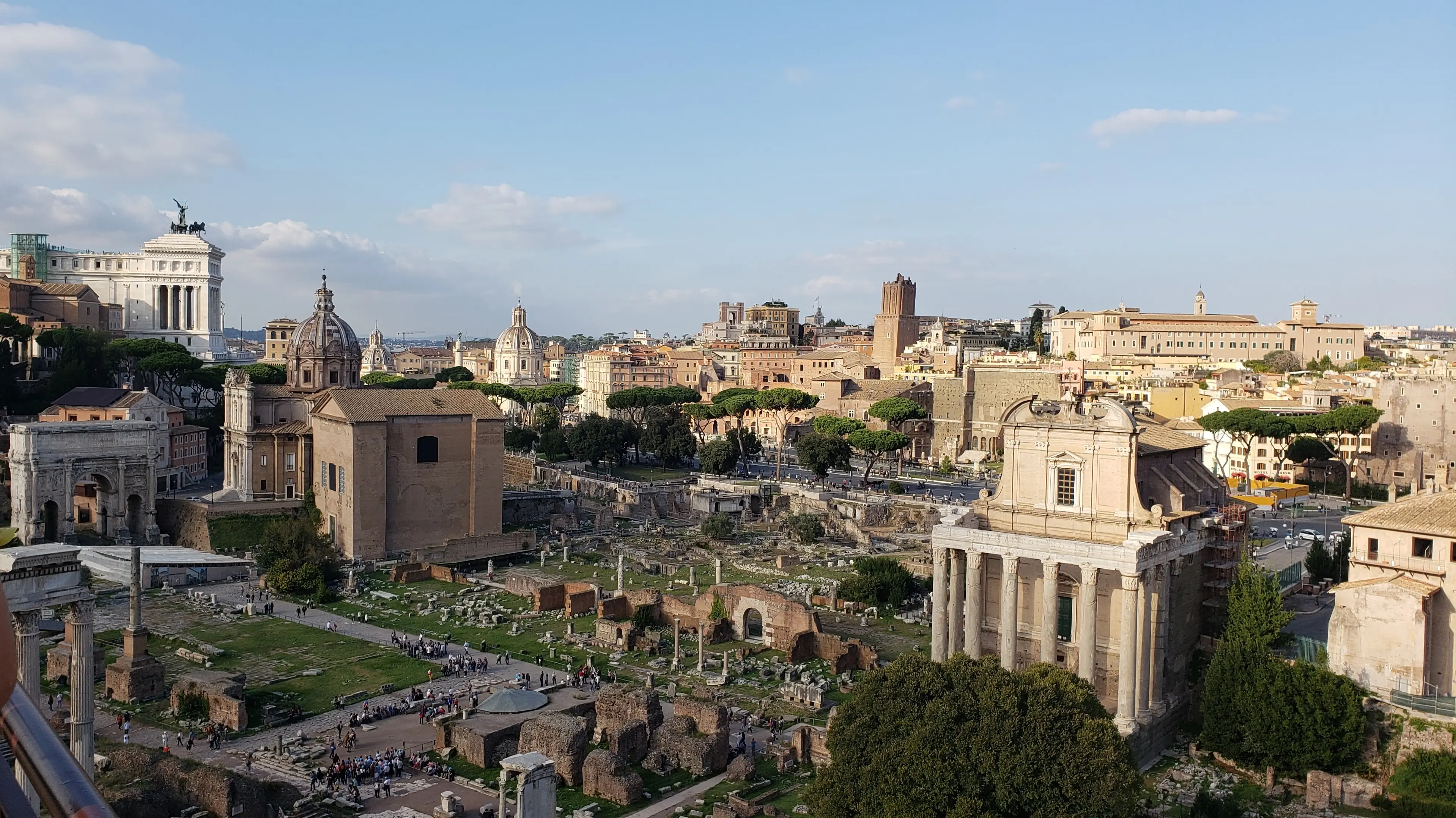Hello dear friends! There’s a stretch of land nestled between the Palatine and Capitoline Hills that looks like scattered ruins at first glance, until you start walking. Suddenly, stone becomes story, columns become characters, and silence becomes the echo of centuries. This is the Roman Forum, the very soul of Ancient Rome. After writing about the legend of Romulus and Remus, it felt natural to come here. Because this isn’t just where Rome was ruled. This is where Rome became Rome.
✨ What Was the Roman Forum?
The Roman Forum, or Forum Romanum, was the epicenter of life in ancient Rome. Long before skyscrapers and smartphones, this open-air plaza buzzed with energy, drama, and ambition. It began as a marshy lowland between the Palatine and Capitoline Hills, drained and developed into a central marketplace in the 7th century BC. Over time, it blossomed into the heart of Roman civilization.
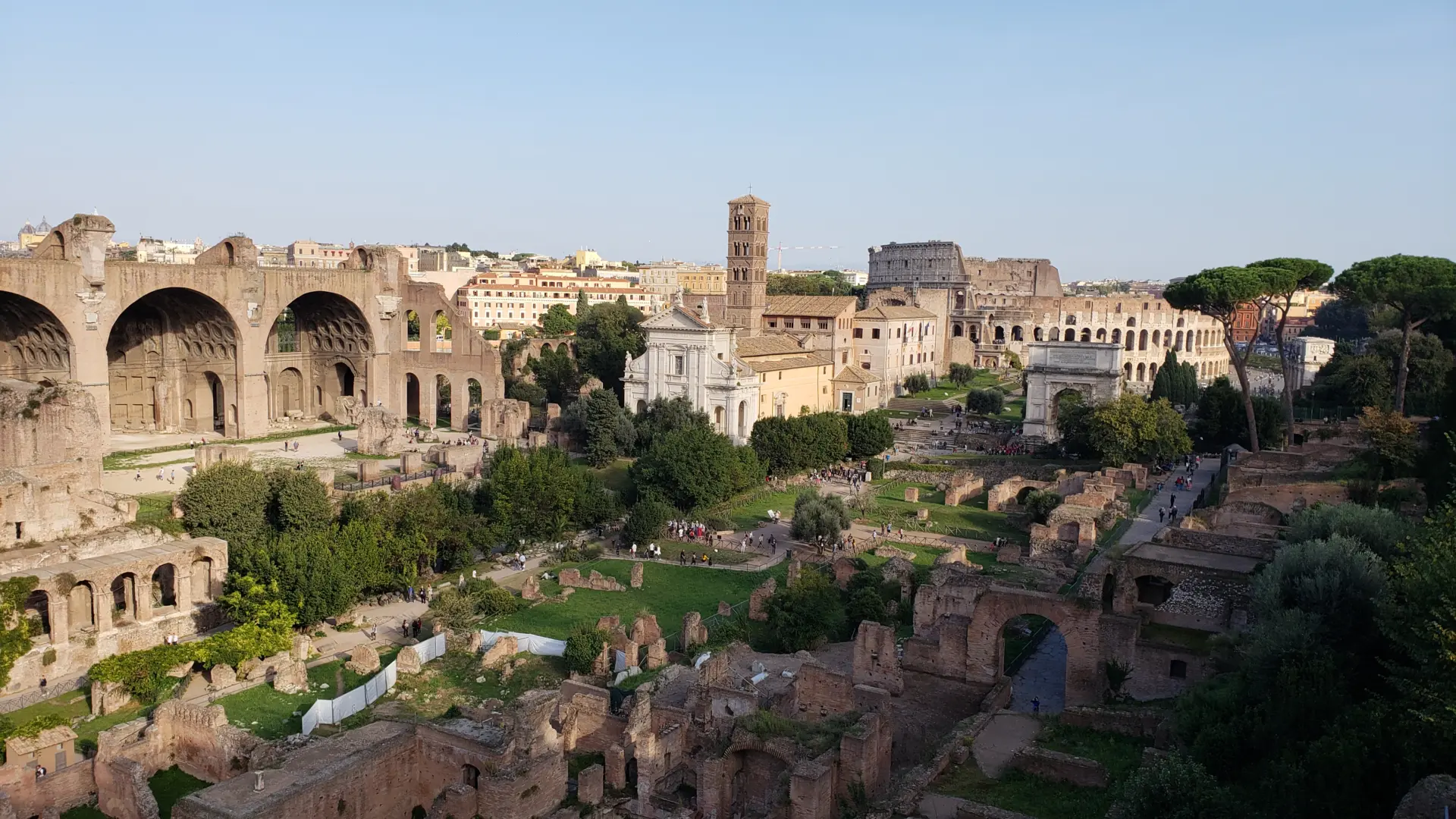
Here, people gathered not just to shop or gossip, but to debate laws, worship the gods, attend trials, and witness political history in the making. Tribunes addressed the crowds from the Rostra, senators huddled in the Curia, Vestal Virgins tended sacred flames, and victorious generals passed beneath triumphal arches. The Forum wasn’t just functional, it was symbolic. It embodied Roman identity, pride, and power. Even in ruins, the Forum speaks volumes. You don’t just see history, you stand in it!
🏛 A Walk Through the Forum: A Few Must-See Highlights
📍 Temple of Romulus: Not the mythical founder, but the son of Emperor Maxentius. Built around 307 CE, this circular temple is incredibly well preserved, with its original bronze doors still intact. It now forms part of the Church of Santi Cosma e Damiano.
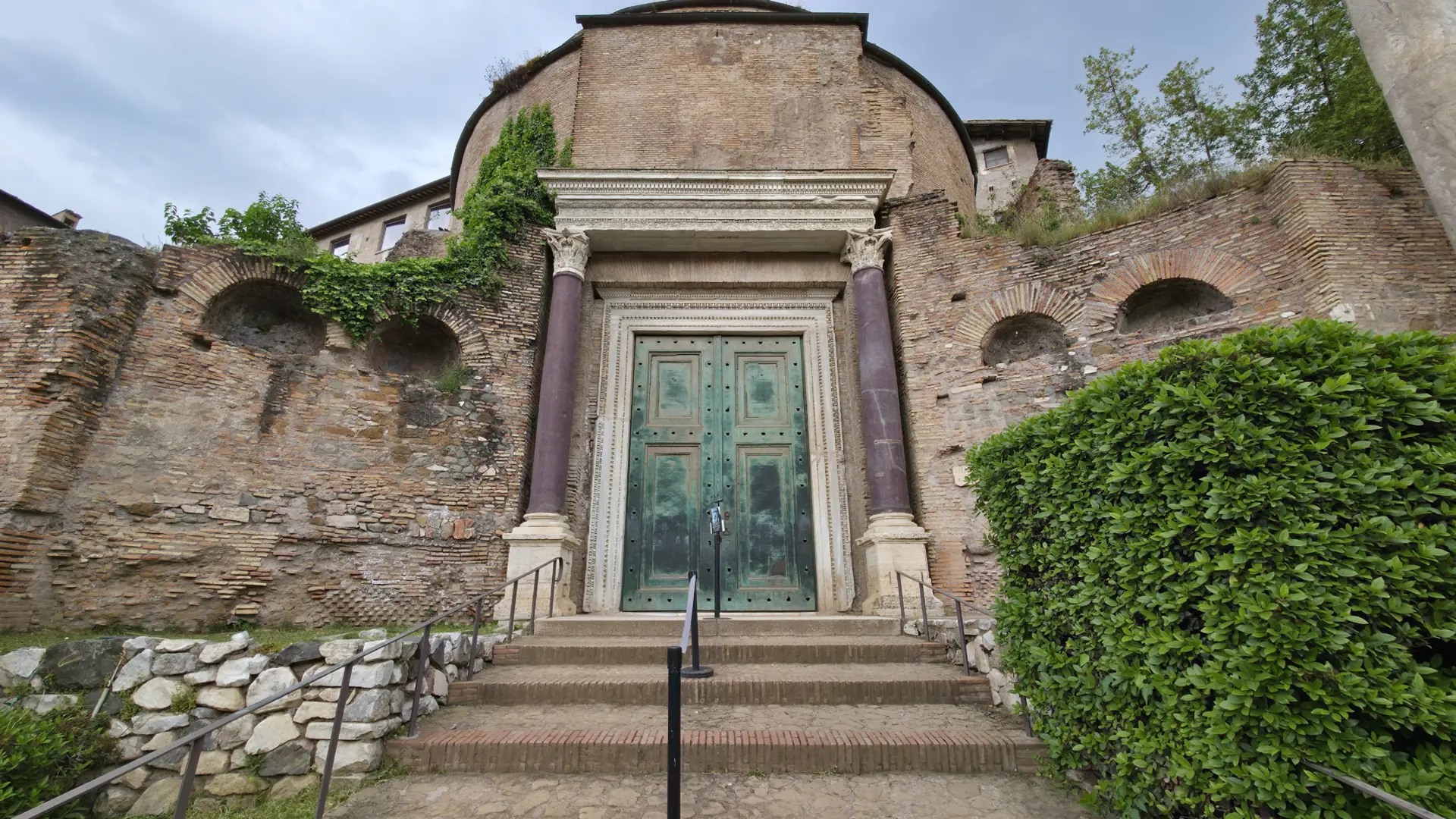
📍 Temple of Antoninus and Faustina: Built in 141 CE by Emperor Antoninus Pius to honor his deified wife Faustina, and later dedicated to both after his death in 161 CE. Towering Corinthian columns of cipollino marble still frame the entrance, rising 17 meters high in one of the Forum’s most spectacular displays of Roman architecture. Its fusion with the later church of San Lorenzo in Miranda makes it a unique layer cake of Roman and Christian history.
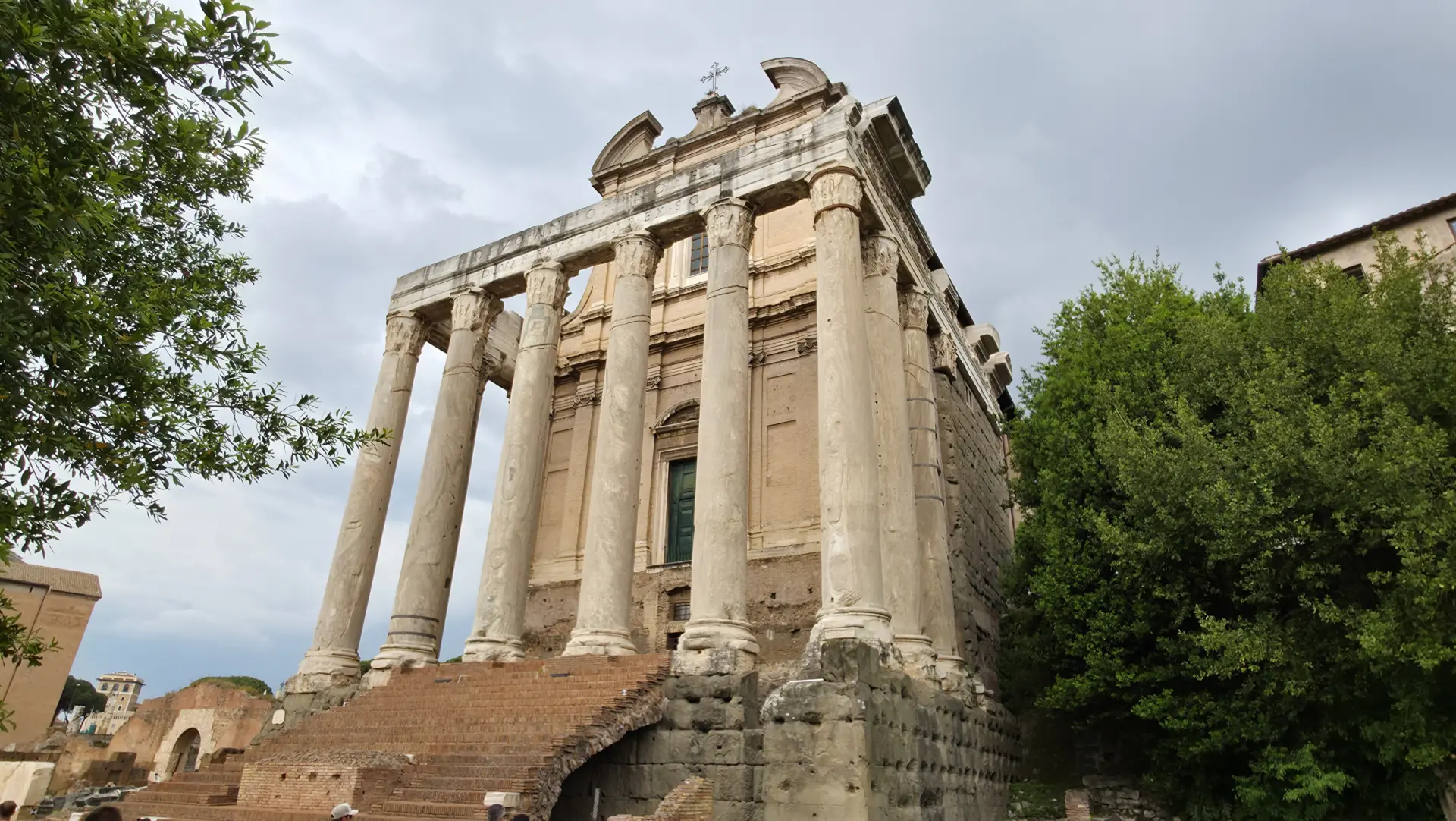
📍 Arch of Septimius Severus: Erected in 203 CE to celebrate Emperor Septimius Severus’s victories over the Parthians. It’s covered with stunning bas-reliefs showing scenes of battle and triumph. Walk underneath and you’ll feel the gravitas of imperial propaganda carved in stone.
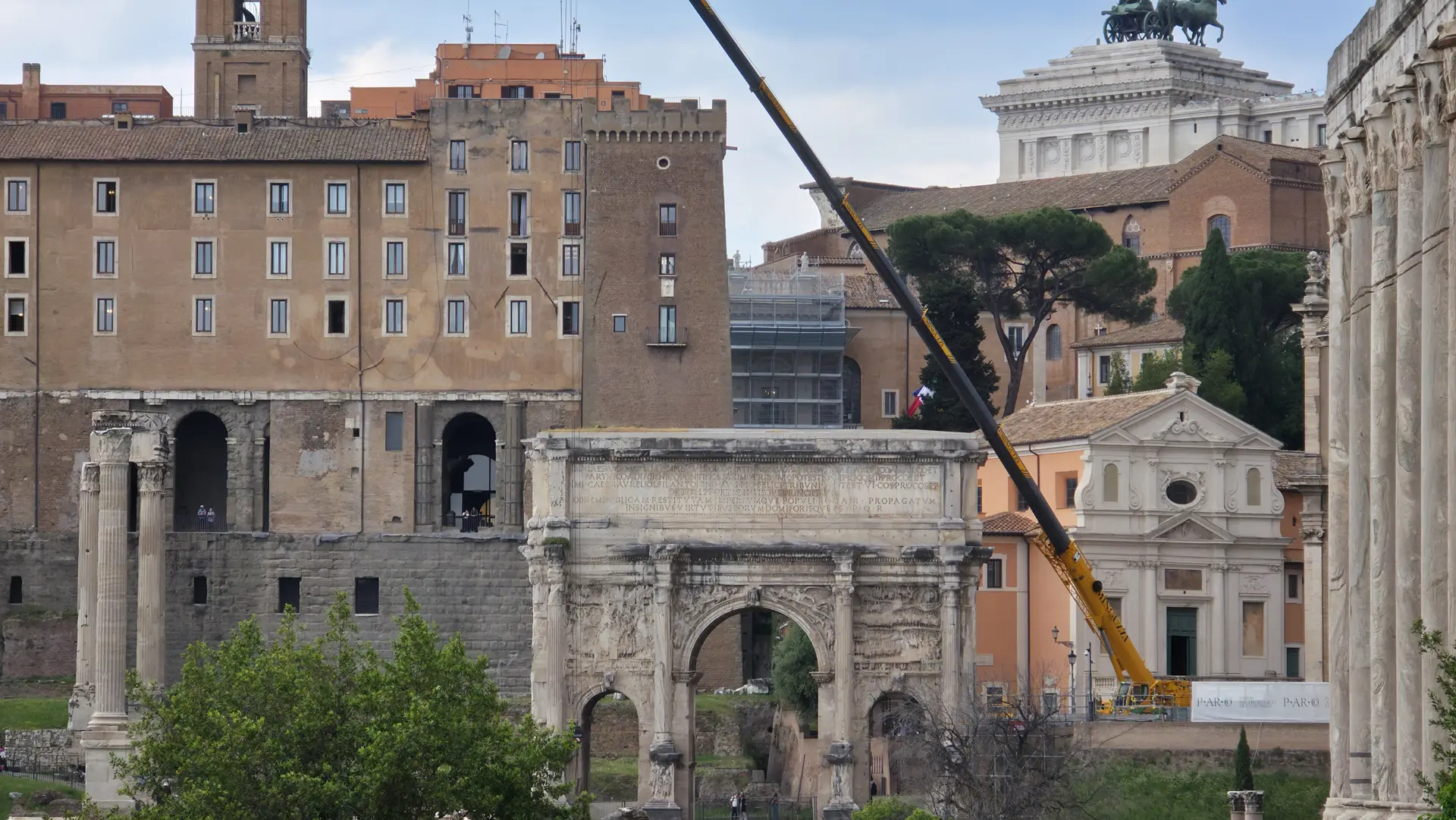
📍 Temple of Vesta: This circular temple housed the eternal flame of Rome, guarded by the Vestal Virgins. Small in size but immense in symbolism, it’s a sacred reminder of Rome’s religious rituals and the divine protection of the goddess Vesta.
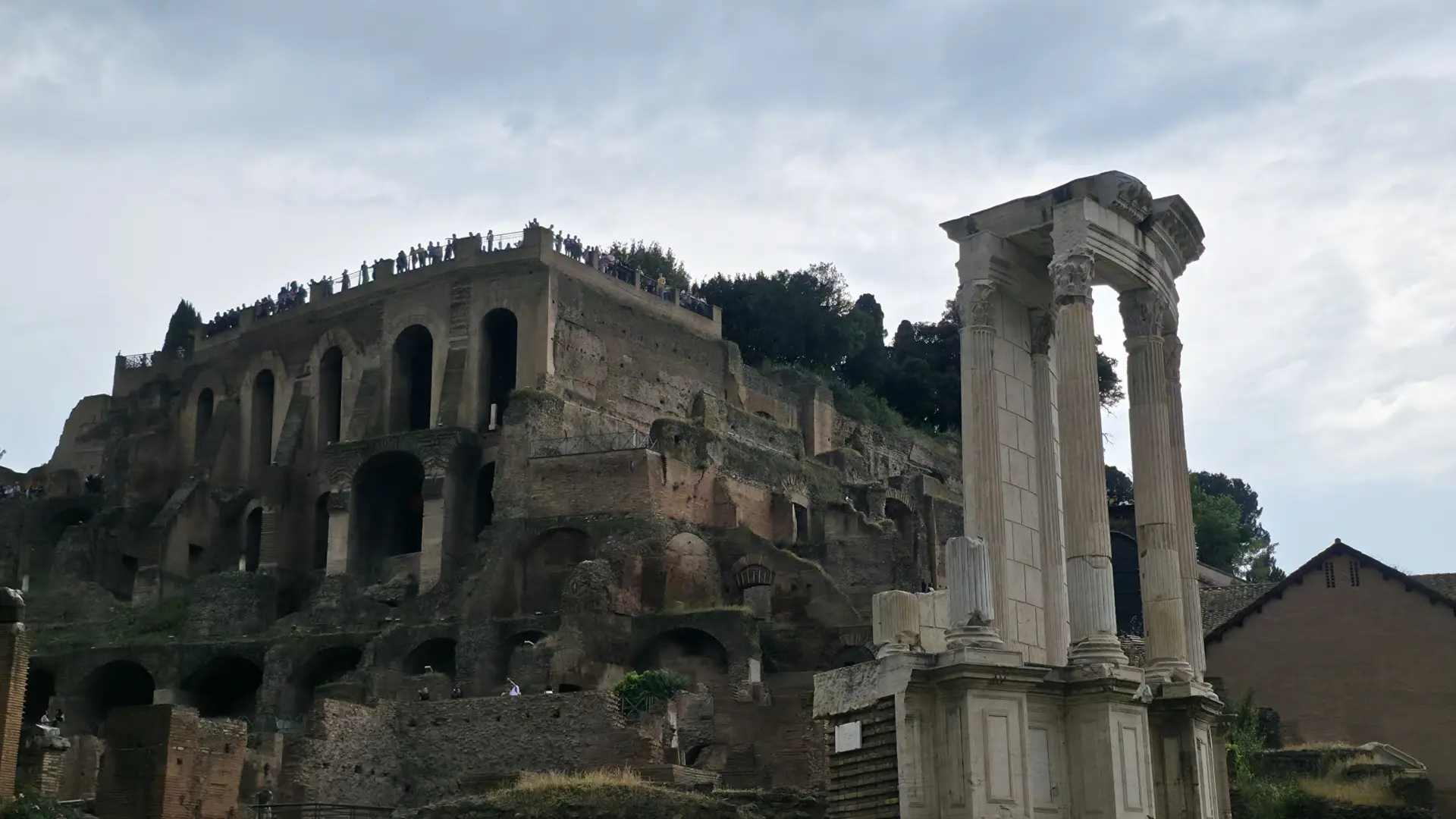
📍 Arch of Titus: Constructed in 81 CE to commemorate Emperor Titus’s victory in the Siege of Jerusalem. The arch’s interior reliefs famously show Roman soldiers carrying spoils from the Jewish Temple, including the Menorah, and serve as a vivid testament to imperial conquest.
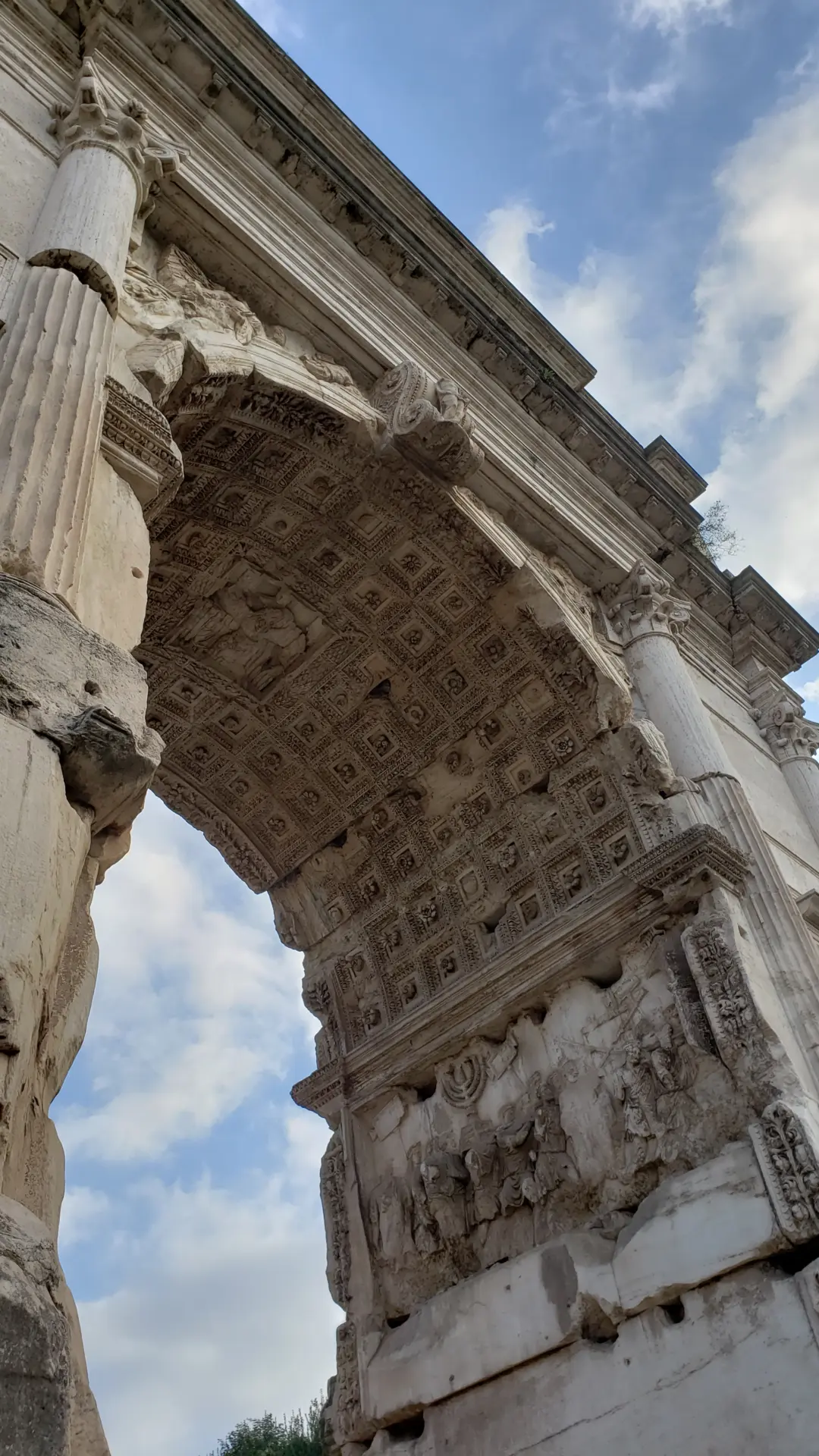
🐾 Walking the Via Sacra
The Via Sacra, or “Sacred Way,” was the Forum’s main road, and Rome’s most important ceremonial route. It stretched from the Capitoline Hill, winding through the Forum, all the way to the Colosseum. This road saw it all: triumphal parades, religious festivals, public speeches, and solemn rituals. Imagine it, Julius Caesar’s funeral procession passed here. Emperors like Titus and Augustus walked this road, clad in gold-trimmed togas, cheered by citizens. Priests chanted blessings as they carried offerings to temples. When I walked the Via Sacra myself, the stone under my feet was uneven and timeworn, and yet it buzzed with memory.
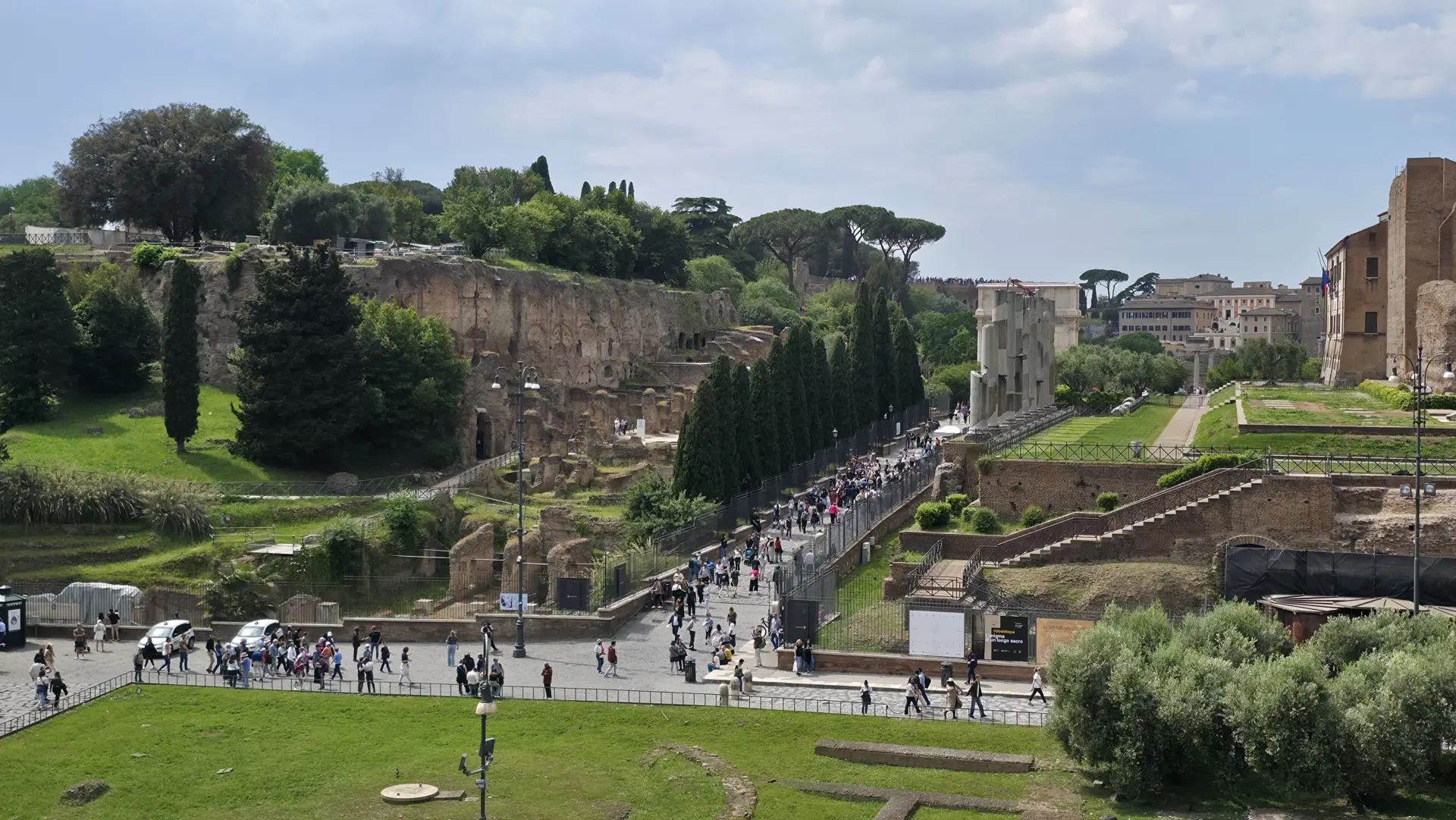
There’s something electric about stepping where millions have stepped before, where history didn’t just happen, it marched.
🐺 From Myth to Monument
Rome’s mythology and geography are impossibly intertwined, and nowhere is that more palpable than in and around the Forum. Just beyond its edges rises Palatine Hill, where legend says Romulus and Remus were brought after the she-wolf (lupa) found and nursed them by the Tiber’s banks. Romulus would later slay his brother and found Rome on this very hill, setting the stage for empire. At the base of the Palatine lies the Lupercal, the sacred cave where the twins were supposedly nursed. Though archaeologists continue to debate its exact location, the mythic power of the place remains tangible. Looking up at Palatine from the Forum feels like gazing into Rome’s origin story itself. Here, myth isn’t separated from fact, it breathes with the ruins, woven into the very stones where emperors later built their palaces on the hill where Rome began.
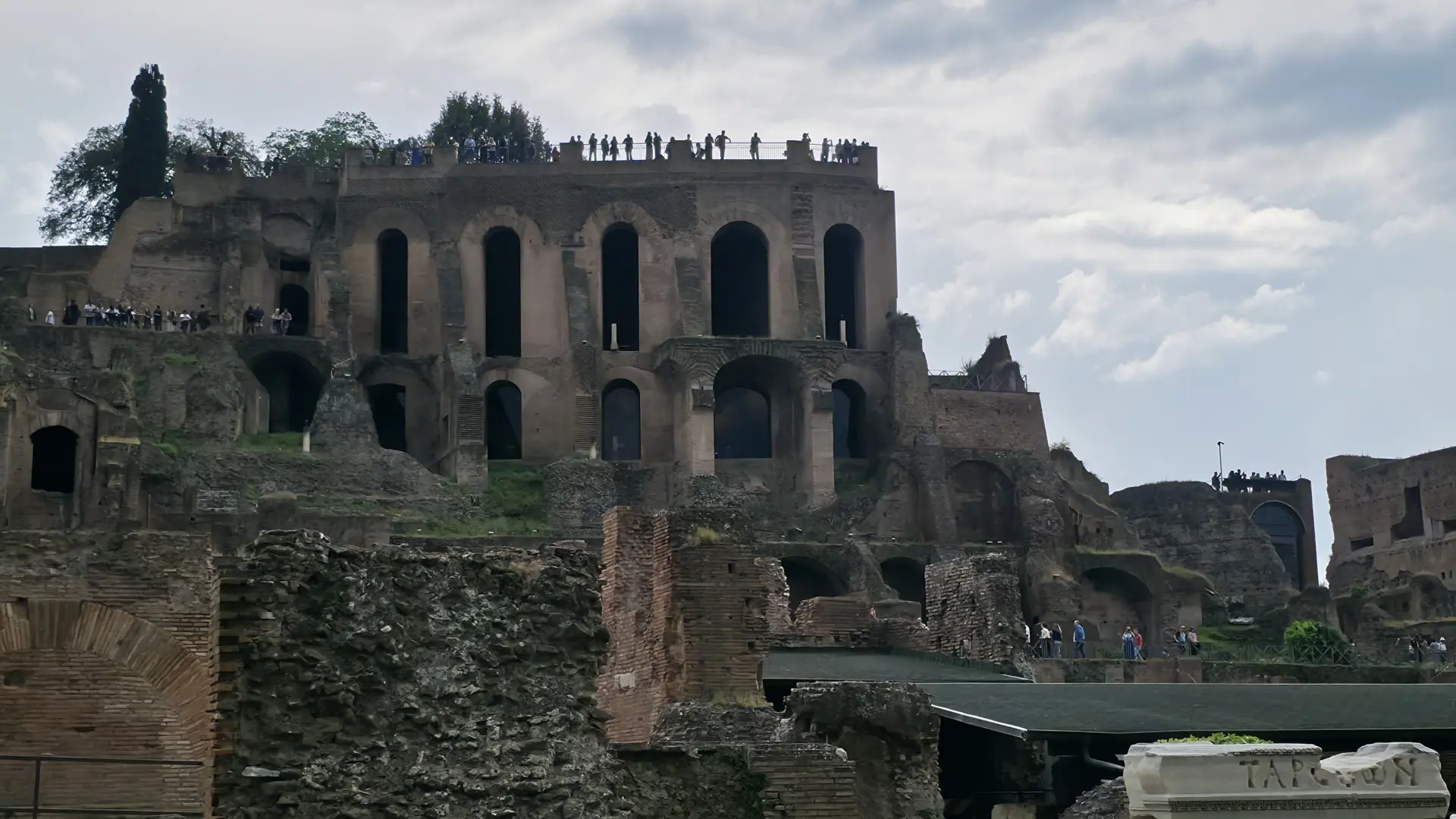
📸 Tips Before You Go
✅ Buy a combo ticket that includes the Colosseum, Roman Forum, and Palatine Hill.
✅ Wear comfortable shoes, it’s uneven and rocky in places.
✅ Bring water and sunscreen, especially on warm days.
✅ Allow at least 1.5–2 hours to wander and absorb the space.
✅ Hire a guide or use an audio app for context, every stone has a story.
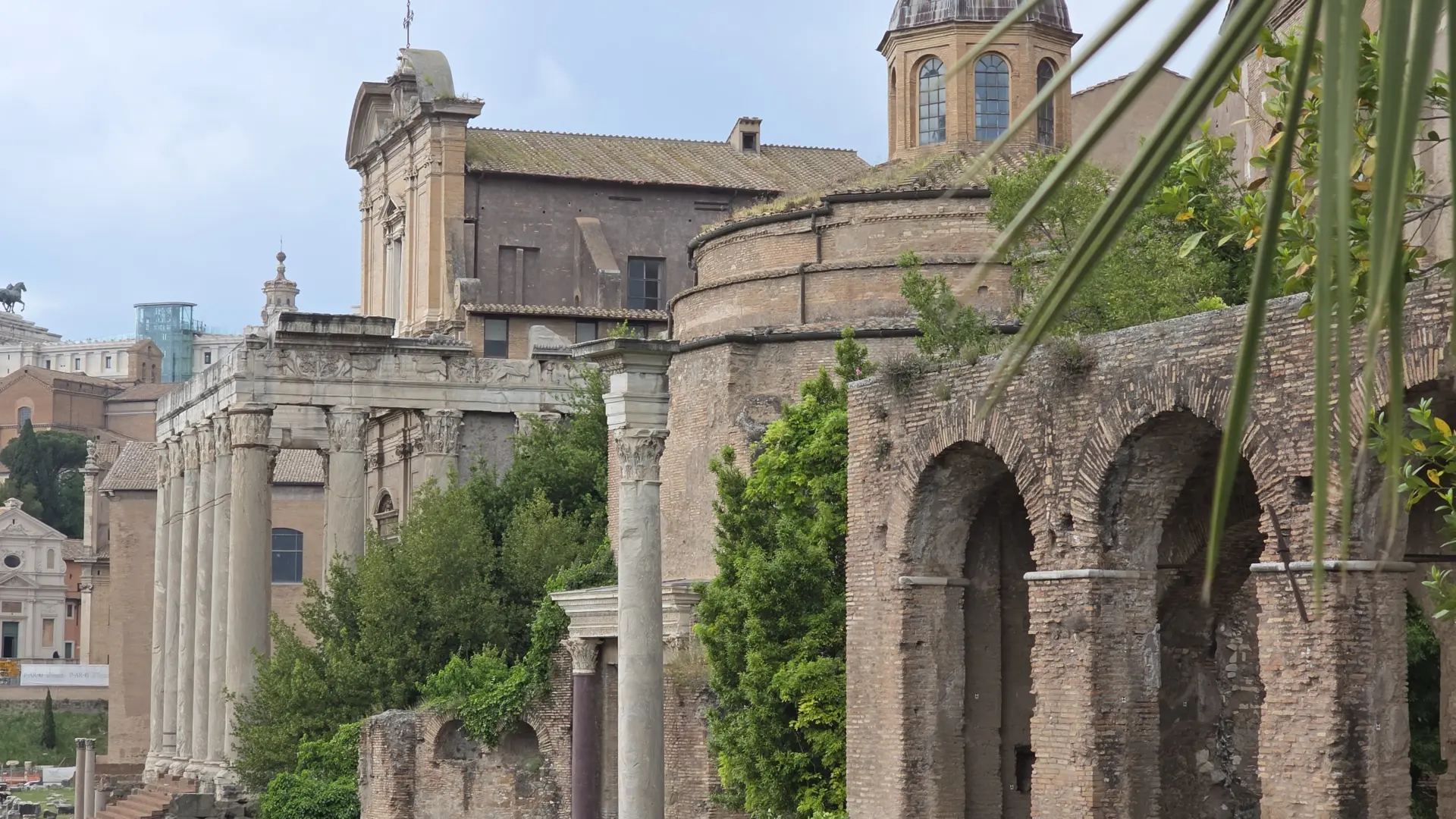
Final Thoughts
Walking through the Roman Forum felt like walking through layers of time. It’s not just about what you see, broken temples, leaning columns, marble fragments. It’s about what you feel: the rise and fall of power, the sacredness of tradition, the echoes of voices that once shaped an empire.
This isn’t just a place for history buffs. It’s a place for dreamers, for travelers who want to be moved, for anyone who’s ever felt awestruck by the sheer sweep of time.
As I stood by the Arch of Septimius Severus, I looked out at the Forum and thought: This isn’t just the heart of ancient Rome, it’s the heart of something eternal.
Until next time…
xoxo,
Bubbly 💕

